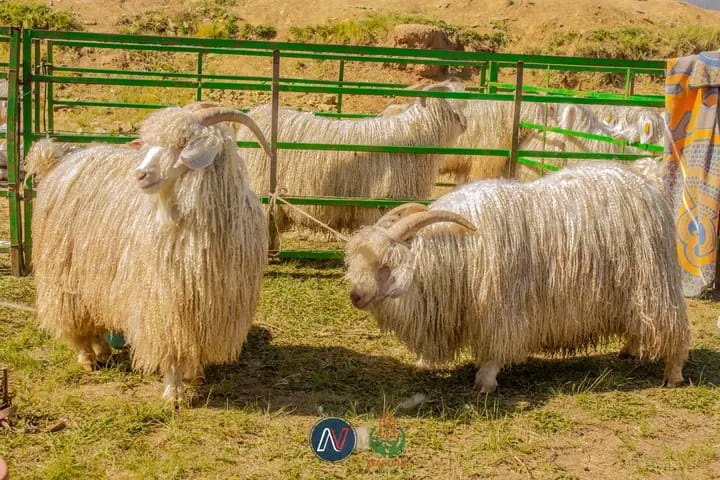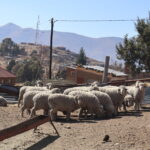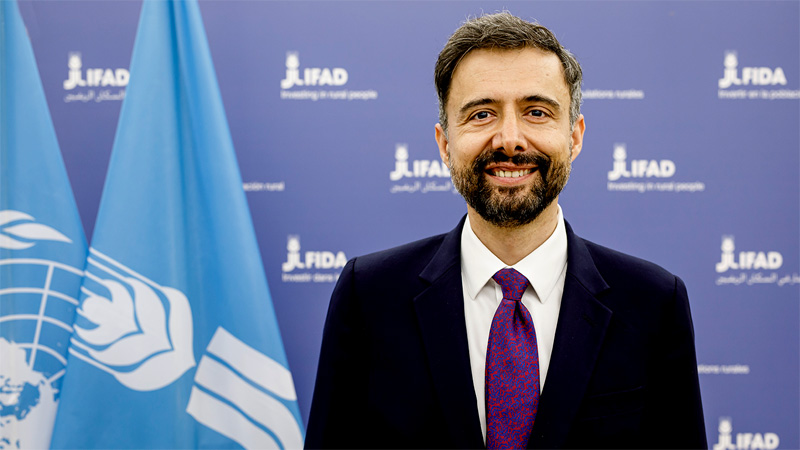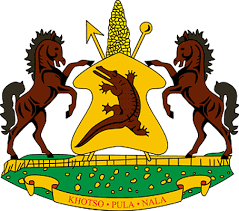Lerato Matheka
Lesotho’s wool and mohair industry has long played a pivotal role in the country’s economy, offering a vital source of income for thousands of smallholder farmers.
For generations, wool from sheep and mohair from goats have not only been key agricultural exports but have also supported the livelihoods of the Basotho people, particularly those in rural and mountainous regions.
Despite this, the sector has faced significant challenges, such as climate change, land degradation, and limited market access, which have hindered its potential and recognising these obstacles, the International Fund for Agricultural Development (IFAD) launched the Wool and Mohair Promotion Project (WAMPP) in 2015.
The project, which concluded in 2023, aimed to enhance the resilience, productivity, and income of smallholder wool and mohair farmers, particularly in Lesotho’s highland areas.
The initiative sought to mitigate the effects of climate change, improve land management practices, and bolster the sector’s marketability, making wool and mohair a reliable and sustainable source of income for Lesotho’s rural population.
A recent Project Performance Evaluation (PPE) report conducted by IFAD has provided valuable insights into the successes and challenges of WAMPP.
The evaluation assesses the project’s outcomes and offers recommendations for the future.
With a total project cost of US$39.7 million, the report indicated that WAMPP had left a lasting impact on Lesotho’s agricultural landscape, and its lessons could inform future initiatives aimed at promoting sustainable and inclusive growth in the wool and mohair industry.
The Wool and Mohair Industry: A Vital Economic Driver
The wool and mohair industry holds significant importance in Lesotho, not only as a major export commodity but also as a critical source of livelihood for rural farmers.
Lesotho is one of the world’s largest producers of mohair, a highly sought-after luxury fibre used in the textile industry. In 2014, wool and mohair collectively contributed approximately 6.3% to the country’s total exports, making it a vital contributor to the national economy. The industry provides raw materials for Lesotho’s thriving textile sector, representing 43.4% of exports.
However, the industry has faced several challenges over the years, including overgrazing, rangeland degradation, limited access to markets, and the impact of climate change.
These issues have been compounded by weak rangeland management and an inefficient value chain, leading to suboptimal production and lower market returns for farmers.
In response, WAMPP was designed to address these systemic issues by focusing on three core components:
- climate-smart rangeland management,
- improved livestock production and management,
- and wool and mohair processing and marketing.
These components were critical in helping smallholder farmers improve their production quality, access new markets, and build resilience against climate-related shocks.
A Three-Pronged Approach to Boosting Wool and Mohair Production
1. Climate-Smart Rangeland Management
One of the most pressing issues affecting the wool and mohair industry in Lesotho is the degradation of rangelands due to overgrazing and poor land management practices. “The resulting soil erosion and land degradation directly impacted livestock health, reducing the quality and quantity of wool and mohair produced. To address this, WAMPP focused on promoting sustainable, climate-smart rangeland management practices,” the report noted.
It added that the project established community-based grazing management systems to ensure that communal grazing lands were used sustainably.
“By involving local communities in the management of these lands, WAMPP promoted a sense of ownership and responsibility among farmers, while the introduction of rotational grazing systems and the rehabilitation of degraded lands helped to improve livestock nutrition, which, in turn, led to better wool and mohair yields,” the report evaluated.
In addition to these efforts, the project provided training to farmers on the importance of sustainable rangeland management. This included educating them on the dangers of overgrazing and the benefits of maintaining healthy rangelands.
“The use of Geographic Information Systems (GIS) to monitor rangeland health also provided valuable data to help farmers make informed decisions about grazing practices.”
2. Improved Livestock Production and Management
Another key component of WAMPP was improving the productivity of livestock through better nutrition, breeding practices, and veterinary services.
Wool and mohair yields in Lesotho have historically been low due to inadequate animal nutrition, poor access to improved genetic material, and a lack of veterinary care but, to address these challenges, WAMPP introduced several initiatives to raise the standard of livestock production.
Focusing on three main areas: improved livestock nutrition, better breeding practices, and enhanced animal health, farmers were trained in best practices for feeding and caring for their livestock, and they were given access to improved feed and veterinary medicines.
Additionally, the project facilitated the introduction of high-quality breeding stock, which helped improve the genetic makeup of sheep and goats, resulting in better wool and mohair quality.
The project also placed a strong emphasis on animal health, recognising that healthy livestock are essential for improved productivity.
“Veterinary services were expanded to provide farmers with access to vaccines and medicines that could prevent common livestock diseases, and this contributed to higher survival rates among animals, ensuring that farmers could sustain their herds and increase wool and mohair production.”
3. Wool and Mohair Processing and Marketing
While improving livestock production was a key focus, WAMPP also recognised the importance of enhancing the value chain for wool and mohair. The project sought to improve the processing, handling, and marketing of wool and mohair, with the goal to increase market returns for smallholder farmers.
“One of the major interventions under this component was upgrades of shearing sheds across Lesotho.”
These sheds serve as collection points where wool and mohair are processed and graded before being sold on the market. By improving the infrastructure and equipment at these sheds, WAMPP helped to ensure that wool and mohair were handled more efficiently, resulting in higher-quality fibre that could fetch better prices.
Proving to be gender inclusive, the project also promoted the development of niche cottage industries, particularly for women, to add value to wool and mohair through spinning, weaving, and garment production. This not only provided additional income opportunities for rural women but also helped diversify the wool and mohair value chain.
Challenges and Lessons Learned
Despite its successes, the report revealed that WAMPP faced several challenges during its implementation.
“One of the most significant threats was the issue of land degradation, which persisted in some areas despite the project’s efforts to promote sustainable grazing practices. In some cases, farmers, encouraged by the improved productivity of their livestock, increased their herd sizes, leading to further strain on already degraded rangelands. This highlights the need for continued education and enforcement of sustainable grazing practices,” the report said.
Another challenge the report pointed out was the coordination among government ministries, farmer organisations, and individual farmers.
“While WAMPP was successful in bringing together various stakeholders, there were instances where delays in communication and decision-making slowed the implementation of certain project activities.”
The evaluation looked to the COVID-19 pandemic as having posed a significant threat to the project noting lockdowns and restrictions on movement disrupted market access for farmers and slowed the procurement of materials and services needed for project activities.
The pandemic then resulted in WAMPP extending its timeline by one year to complete all planned activities.
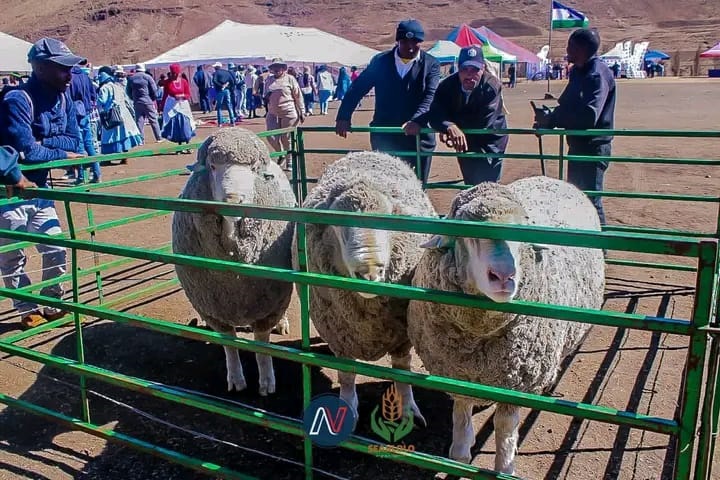
The Road Ahead: Building on WAMPP’s Success
While WAMPP officially concluded in 2023, its impact on Lesotho’s wool and mohair industry is likely to be felt for years to come.
The project successfully laid the groundwork for a more resilient, productive, and sustainable wool and mohair sector, benefiting thousands of smallholder farmers and their families.
In 2023, IFAD approved a new project, the Wool and Mohair Value Chain Competitiveness Project (WaMCoP), which is expected to build on the successes of WAMPP.
WaMCoP aims to promote inclusive and sustainable economic growth in the wool and mohair sector, with a focus on private sector-led job creation.
The project will continue to support smallholder farmers by improving their access to markets, enhancing value chain efficiency, and fostering climate resilience.
The evaluation report recommended a need for continued investment in sustainable rangeland management, and a need to empower farmers with tools, knowledge, and incentives to adopt long-term sustainable grazing practices, saying this would be critical to the future success of the wool and mohair industry.
“Additionally, there is a need to strengthen the governance of the value chain, particularly by ensuring that the Lesotho National Wool and Mohair Growers Association (LNWMGA) continues to represent the interests of smallholder farmers while promoting inclusivity and equitable access to resources.
WAMPP demonstrated that with the right support, Lesotho’s wool and mohair industry has the potential to thrive and provide a sustainable livelihood for rural communities. By addressing the challenges of climate change, land degradation, and market access, the project has helped to create a more resilient and productive sector.
As the wool and mohair industry continues to evolve, the lessons learned from WAMPP will be invaluable in shaping future policies and initiatives to promote sustainable agricultural growth in Lesotho.
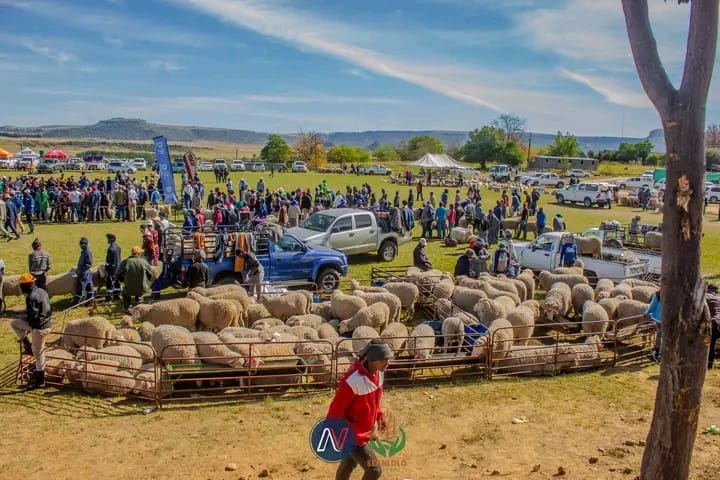
Summary
- The initiative sought to mitigate the effects of climate change, improve land management practices, and bolster the sector’s marketability, making wool and mohair a reliable and sustainable source of income for Lesotho’s rural population.
- 7 million, the report indicated that WAMPP had left a lasting impact on Lesotho’s agricultural landscape, and its lessons could inform future initiatives aimed at promoting sustainable and inclusive growth in the wool and mohair industry.
- “By involving local communities in the management of these lands, WAMPP promoted a sense of ownership and responsibility among farmers, while the introduction of rotational grazing systems and the rehabilitation of degraded lands helped to improve livestock nutrition, which, in turn, led to better wool and mohair yields,” the report evaluated.

Your Trusted Source for News and Insights in Lesotho!
At Newsday Media, we are passionate about delivering accurate, timely, and engaging news and multimedia content to our diverse audience. Founded with the vision of revolutionizing the media landscape in Lesotho, we have grown into a leading hybrid media company that blends traditional journalism with innovative digital platforms.


